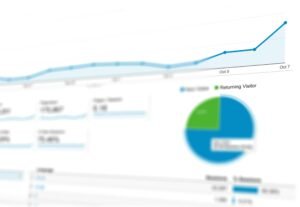Meta’s New ‘Automatic Adjustments’ Feature Raises Concerns Among Advertisers
In a significant yet quiet move, Meta has introduced a feature called “automatic adjustments” to its ad accounts. This update, which allows Meta’s system to alter ad campaigns without explicit advertiser consent, has spurred concerns over loss of strategic control and potential campaign disruptions among advertising professionals.
The Impact of Automation on Advertisers
The automatic adjustments feature grants Meta the ability to pause or activate campaigns, modify budgets, consolidate ad accounts, and change audience segmentations without notifying advertisers. This shift aims to optimize campaign performance through automation but has sparked worry over advertisers’ diminishing control over their own campaigns.
Rok Hladnik was the first to spot and share these changes, leading to a wave of responses from advertisers who reported unintended consequences. Many have experienced a drop in ad spend by as much as 40% and an unauthorized merging of audience segments, thereby affecting the precision and efficacy of their targeted campaigns.
Voices from the Community
Anu Adegbola, Paid Media Editor at Search Engine Land, provided insights into these developments in a recent article. Adegbola emphasized the necessity for advertisers to regularly review their settings to prevent unwanted disruptions. “It’s important for advertisers to stay vigilant and check their account settings frequently to mitigate any adverse effects caused by these automatic adjustments,” she noted.
Community members and industry professionals have also voiced their dissatisfaction through social media platforms. As shared in a post by a user named @brewsawa, “I was so confused when our campaign experienced a 40% drop in spend overnight. Now I know why.”
Heather Brousell, a Lead Generation Ad expert, described her experience: “It turned off profitable ad sets and slowed our ad spend. It also wrongly combined segments of our lookalike audiences, nullifying our segmentation efforts.”
Seeking Control: How to Opt Out
For those interested in disabling this feature, advertisers can opt out by navigating to “All tools” on their Meta platform, selecting “Automated rules,” clicking on “See automatic adjustments,” accessing the “Manage automatic adjustments” page, and turning the feature off. While this option is available, it demands a proactive approach from each advertiser to ensure they maintain the intended control over their campaigns.
Historical Context and Implications
Automation in advertising is not new, but Meta’s decision represents a deeper shift toward system-driven campaign management. This shift could symbolize a turning point where automation increasingly overrides user input, compelling advertisers to reassess their comfort levels with the extent of automation within their strategic frameworks.
The introduction of such automatic changes highlights a broader trend within the tech industry—one that prioritizes AI tools and automation in campaign optimization. While these advancements can drive efficiency and reduce manual workloads, they also bring up discussions regarding the balance between technological initiatives and human oversight.
Exploring Future Outcomes
Looking forward, the broader implications of these changes beckon discussions within the tech news and advertising industry. This policy shift may influence how other platforms approach ad management automation, shaping future standards and expectations around campaign control.
For advertisers, strategic assessment becomes critical. They will need to weigh the benefits of automated systems against the need for human oversight to maintain clarity and intent within their campaign strategies.
Striking a Balance: Different Perspectives
While some advertisers argue against the loss of strategic control, others may find value in automation if it leverages artificial intelligence effectively to enhance campaign outcomes. However, the key remains in offering transparency and options for users to choose the level of automation they are comfortable with—a balance Meta must strive to achieve.
Industry voices, like those of community members and marketing professionals, underscore the necessity for Meta to maintain a dialogue with its users, ensuring their concerns are addressed and their control restored wherever possible.
Local Resources for Advertisers
For advertisers affected by these changes or seeking more information, local forums and online resources through platforms like Search Engine Land offer avenues for shared knowledge and strategic advice. Advertisers are encouraged to stay informed and leverage these resources to best adjust their strategies in light of new automation tools.
In conclusion, Meta’s introduction of automatic adjustments presents both challenges and opportunities for advertisers. As the community navigates this shift, the ongoing discourse will likely continue to shape the evolving relationship between advertisers and automated systems.




